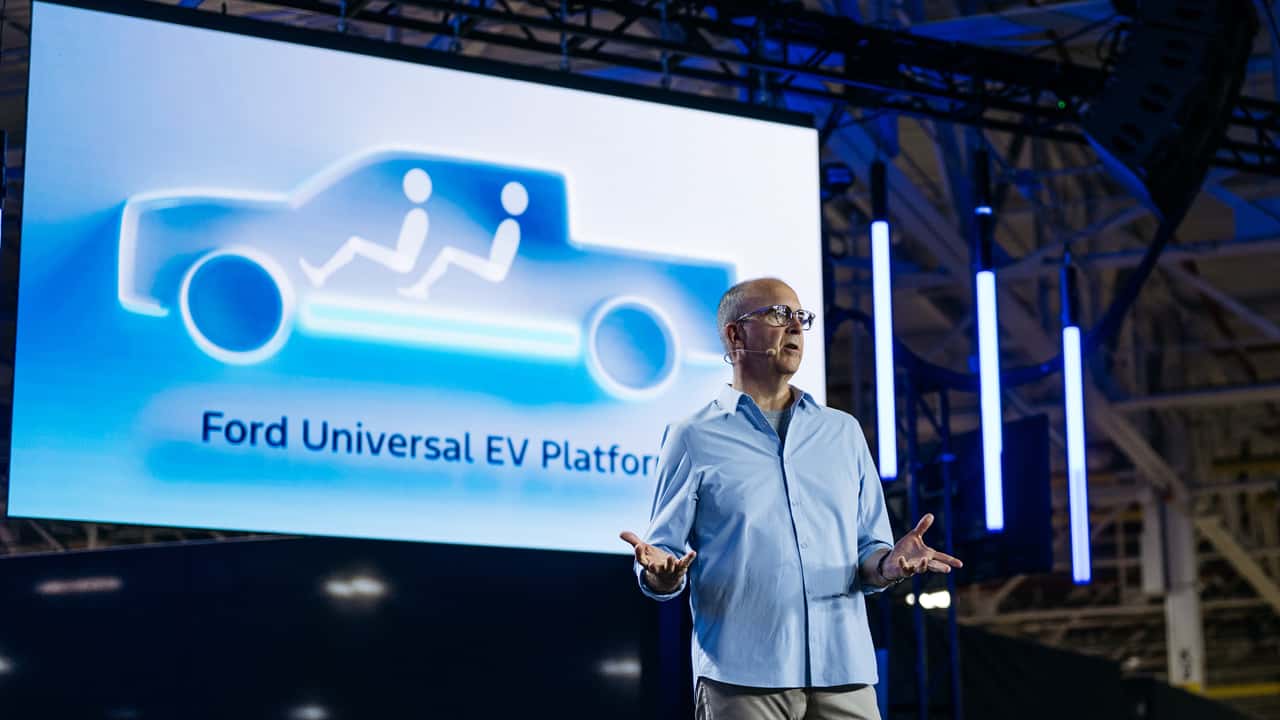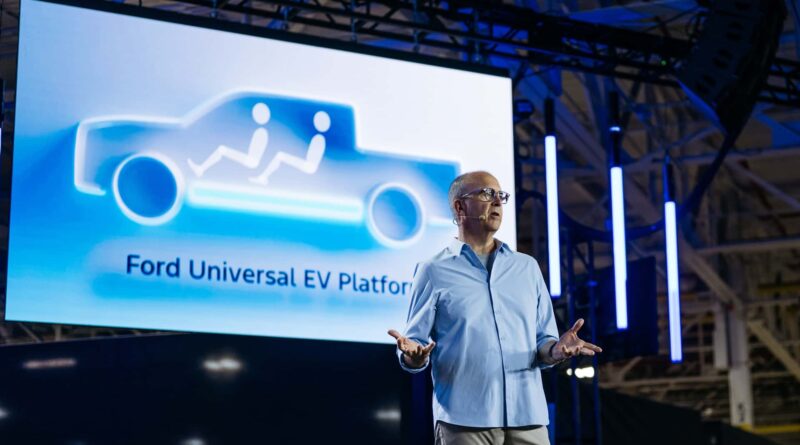Ford Future EV will have the same range but 1/3 less battery

- Ford’s “breakthrough” EV will use batteries that are up to a third smaller than the completed battery.
- But they still offer a similar range, they said that the best boss of EV, Doug Field.
- Many of today’s EV have huge batteries and that’s what makes them heavy and expensive.
On Monday, Ford created a courageous plan for its new generation electric vehicles-BreakreGh EV designed from the ground up to be profitable and hit China where it hurts. One cornerstone of this strategy: ITTY-BITTY BATTERY.
Doug Field, the best head of the EV car manufacturer and a executive worker Tesla, said this week that “Ford’s” obsession “causes its future EV to” achieve a similar range as competitors with a battery that is up to a third smaller “. That would be a big problem if Ford could sweat.
As we informed at the beginning of this week, Ford managers also said that the first vehicle using the new Ford Universal EV platform, a medium-sized pick-up $ 30,000, will offer a battery that is around 51 kilowat. This is quite small-asi half the size of what you would find in the F-15 lightning today.
Without knowing what kind of series the truck will offer, it’s hard to say if it’s a good thing. Everyone from consumers to automakers themselves wants more accessible EV and one way to achieve this is to use expensive battery cells. The challenge is that Americans also demand a lot of driving ranges; 250 gold 300 miles are nowadays.
But now, thanks to Fielda’s comments, we know how Ford is thinking. He wants to achieve both of these goals at the same time: increasing the efficiency and reducing the size of the battery, while still hit by competitive range numbers.
This would be a big change compared to the approach that we have so far seen from Ford and some other manufacturers, especially when it comes to full -size trucks. Large EV, such as the Chevrolet Silverado EV and GMC Hummer, use huge batteries that make them extra heavy and research. That is why any large electric pickup instructs a sharp price bonus compared to gas versions. It is a large battery that can cost $ 20,000 or $ 30,000.
On the other hand, if a company like a Ford can manager reduce Battery size through better aerodynamics and other efficiency gains that could solve many largest challenges facing the EV market. Lithium-ion batteries have seen huge cost drops, as the EV industry has reduced, but is still the most beautiful part in an electric car. Reducing is battery size, even an io small amount, it can eliminate hundreds or thousands of dollars in the input cost.
This could be reflected in the more affordable EV and a better business case for Ford, which is something that needs wrong. The EV division has lost approximately $ 12 billion over the last two and a half years because it was invested in research and development and sold relatively few vehicles.
In fact, the CEO of Ford Jim Farley has defeated this drum for some time: that the economy for Big EV does not make sense and that smaller, cheaper are critical. And the company has already spoken about increasing efficiency. Field, when he set the previous Ford strategy for investors’ events in 2024, said the company’s three -row SUV would have a battery that was one third less than its completed ”.
Much must go directly to make Ford nailed. It is betting on the platform of new vehicles, which is designed to be much more efficient, SO 20% fewer parts and large aluminum castings that replace dozens of individual components. The structural battery, which also serves as a vehicle floor, should help reduce the weight and cost of materials. Ford, a pioneer of the moving mounting line, also developed a new production process for building an EV next generation: “Stand of assembly”.
Contact the author: Tim.levin@insideevs.com
(Tagstranslate) News
